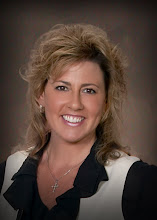"Sure there are pockets of pain-but it isn't as if most American's are losing their homes." More than 99% of homes are not in Foreclosure."
A recent list of year-end mortgage foreclosure rates in 100 top metropolitan areas drew a lot of attention. Released by RealtyTrac, a company that compiles data on home foreclosures, the list showed the number of foreclosure filings in each metro area, the percentage of homes being foreclosed and the percentage change from the previous year.
Though the report had some dismal news -- such as the nearly 4.9% foreclosure rate in the Stockton, Calif., area -- a close look at the data also provides some reassuring information. It tells me, for instance, that the foreclosure crisis is a regional problem, not a systemic one. It could become a systemic problem, of course, but we're a long way from that now.
This news will disappoint the gloom-and-doom crew and all those seeking the excitement of financial upheaval. But it may be time to temper our worry and take a closer look at some of the year-over-year foreclosure statistics:
Though the national rate of foreclosure increased by a whopping 79% between December 2006 and December 2007, the rate was still only 1.033%. Because about 30% of all homes are owned mortgage-free, this means that for all the noise about a crisis, only seven-tenths of 1% of all homes were in foreclosure.
In the top 100 housing markets, the average foreclosure rate was somewhat higher -- 1.38% -- and it was up 78% over the previous year. But if you rank-ordered the list of the top 100 areas, only 34 had foreclosure rates above the group average. Fifty-one areas had rates of 1% or less.
Foreclosure rates actually fell in 14 of the 100 areas. More important, many of the areas with the highest increases in foreclosure rates were rising off rates that were tiny. The Bethesda, Md., area, to offer the most extreme case, saw foreclosures rise 1,288% -- to a rate of 0.682%. In other words, foreclosures there were virtually nonexistent the year before. Today they are still well below the national average. The same can be said for the Albany, N.Y., area (up 638% to 0.25%), the Baltimore area (up 544% to 0.73%) and the Providence, R.I., area (up 354% to 0.41%).
For More information, or for a Housing Counselor:
Contact Wendi-Mae Davis,CRS, GRI
Director of the California Association of Realtors
Broker Associate, Counselor
20 Years of Service
Connect Realty
http://www.wendimae.com/
Toll Free 866-333-6333
Friday, March 7, 2008
Subscribe to:
Comments (Atom)
